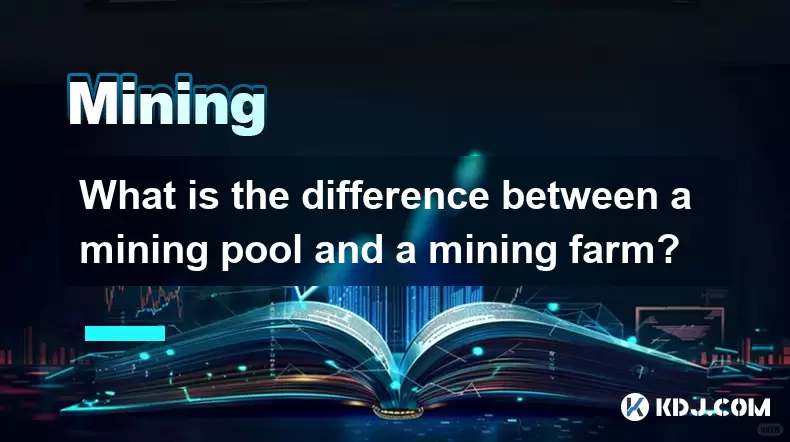-
 Bitcoin
Bitcoin $119,448.2396
0.27% -
 Ethereum
Ethereum $2,992.9919
0.78% -
 XRP
XRP $2.9074
1.58% -
 Tether USDt
Tether USDt $1.0001
0.00% -
 BNB
BNB $687.9097
-0.40% -
 Solana
Solana $161.5804
-0.47% -
 USDC
USDC $0.9998
0.01% -
 Dogecoin
Dogecoin $0.1948
-2.10% -
 TRON
TRON $0.3013
-0.08% -
 Cardano
Cardano $0.7286
-3.16% -
 Hyperliquid
Hyperliquid $47.3153
-3.81% -
 Stellar
Stellar $0.4543
-9.79% -
 Sui
Sui $3.8809
5.63% -
 Chainlink
Chainlink $15.6262
-0.55% -
 Hedera
Hedera $0.2368
-5.31% -
 Bitcoin Cash
Bitcoin Cash $501.2030
-0.80% -
 Avalanche
Avalanche $21.0650
-1.43% -
 UNUS SED LEO
UNUS SED LEO $9.0006
-0.39% -
 Shiba Inu
Shiba Inu $0.0...01310
-1.90% -
 Toncoin
Toncoin $3.0040
1.56% -
 Litecoin
Litecoin $93.8936
-1.20% -
 Monero
Monero $341.8918
1.27% -
 Polkadot
Polkadot $3.9087
-3.05% -
 Uniswap
Uniswap $8.9599
4.78% -
 Dai
Dai $0.9999
0.02% -
 Ethena USDe
Ethena USDe $1.0005
-0.02% -
 Bitget Token
Bitget Token $4.3954
-0.14% -
 Pepe
Pepe $0.0...01207
-2.26% -
 Aave
Aave $314.5223
1.72% -
 Bittensor
Bittensor $408.6988
2.76%
What is the difference between a mining pool and a mining farm?
Mining pools allow miners to combine computational resources and share rewards, increasing profitability for individual participants.
Jul 15, 2025 at 01:56 pm

Understanding the Concept of a Mining Pool
A mining pool refers to a collective group of cryptocurrency miners who combine their computational resources over a network to increase their chances of successfully mining blocks. In this setup, each miner contributes processing power to solve complex cryptographic puzzles required for validating transactions on the blockchain.
When a block is successfully mined by any member of the pool, the rewards are distributed among all participants based on their contributed hash rate. This distribution model ensures that even smaller miners can earn consistent returns instead of waiting indefinitely for solo mining success.
Key characteristics of mining pools include:
- Shared computational effort
- Reward sharing mechanisms (e.g., PPLNS, Proportional)
- Reduced variance in earnings
The concept of pooling resources helps democratize mining profitability and lowers the entry barrier for individual miners.
Note:
Joining a reputable mining pool can significantly improve your mining efficiency and reduce downtime due to hardware or software issues.What Defines a Mining Farm?
A mining farm, in contrast, is a physical location equipped with numerous mining rigs—specialized hardware such as ASICs or GPUs—dedicated solely to mining cryptocurrencies. These farms can range from small setups in a garage to large-scale industrial facilities spread across warehouses or data centers.
Unlike mining pools, which are virtual collaborations, mining farms are tangible operations where individuals or companies invest heavily in hardware, cooling systems, electricity infrastructure, and maintenance personnel.
Features commonly associated with mining farms include:
- High-density deployment of mining hardware
- Custom-built ventilation and cooling systems
- Dedicated power supply and energy optimization strategies
Mining farms aim to maximize hashrate output through sheer scale and optimized operational conditions rather than collaboration with external miners.
Note:
Mining farms typically require significant upfront capital investment and technical expertise in managing large-scale hardware deployments.How Do Mining Pools Operate?
Mining pools function by connecting miners via a centralized server or decentralized protocol. When a miner joins a pool, they configure their mining software to connect to the pool’s server address, port, and login credentials.
Once connected, the mining software receives work units from the pool. Each miner processes these units and submits "shares" back to the pool server. Shares represent proof-of-work done and help the pool track each miner’s contribution.
If a miner finds a valid block solution, it is submitted to the blockchain network via the pool’s server, and the reward is shared accordingly. The most common reward systems include:
- Pay-per-Last-N-Shares (PPLNS): Rewards are calculated based on the number of recent shares submitted before a block is found.
- Proportional: Miners receive payouts proportional to the shares they submitted during the round.
- Score-based: Miners earn points based on the difficulty of shares, which are then used to calculate rewards.
Note:
Choosing the right payout scheme is crucial for maximizing profitability and minimizing variance in income.Operational Structure of Mining Farms
Setting up a mining farm involves several critical steps:
- Hardware selection: Choose appropriate ASIC or GPU models depending on the target cryptocurrency algorithm (e.g., SHA-256 for Bitcoin, Ethash for Ethereum).
- Location scouting: Secure a facility with adequate space, ventilation, and access to low-cost electricity.
- Infrastructure development: Install racks, cooling systems, and redundant power supplies to ensure uptime.
- Software configuration: Deploy mining OS, configure rig management tools, and monitor performance metrics in real time.
- Maintenance planning: Establish procedures for hardware repairs, firmware updates, and system monitoring.
Mining farms may also integrate renewable energy sources like solar or wind to reduce operating costs and environmental impact.
Note:
Energy efficiency and thermal management are two of the most important factors affecting long-term mining farm profitability.Key Differences Between Mining Pools and Mining Farms
Although both mining pools and mining farms contribute to the blockchain ecosystem, they differ fundamentally in structure, operation, and objectives.
| Aspect | Mining Pool | Mining Farm |
|---|---|---|
| Nature | Virtual collaboration | Physical installation |
| Participants | Multiple independent miners | Single operator or entity |
| Resource Sharing | Computational power over the internet | Hardware and infrastructure locally |
| Profit Model | Shared rewards among members | Direct earnings from mined blocks |
| Entry Barrier | Low (can join with one rig) | High (requires significant investment) |
These differences influence how each model scales, generates revenue, and manages risks associated with mining.
Note:
A mining pool focuses on collaborative economics, while a mining farm emphasizes operational scalability and efficiency.Frequently Asked Questions
Q1: Can I run a mining farm without joining a mining pool?
Yes, you can mine independently without joining a pool. However, the probability of finding a block solo is extremely low unless you have an enormous amount of hashing power.
Q2: Is it possible to be part of multiple mining pools simultaneously?
While technically feasible, splitting your mining efforts across multiple pools may not be optimal due to reduced efficiency and potential conflicts in share tracking.
Q3: Are mining farms environmentally sustainable?
This depends on the energy source used. Mining farms powered by renewable energy are more sustainable compared to those relying on fossil fuels.
Q4: What happens if a mining pool shuts down unexpectedly?
Miners will lose connection and stop receiving work units until they switch to another pool. It’s advisable to have backup pool settings configured in your mining software.
Disclaimer:info@kdj.com
The information provided is not trading advice. kdj.com does not assume any responsibility for any investments made based on the information provided in this article. Cryptocurrencies are highly volatile and it is highly recommended that you invest with caution after thorough research!
If you believe that the content used on this website infringes your copyright, please contact us immediately (info@kdj.com) and we will delete it promptly.
- Yukon Handgames: Carcross First Nation's Cultural Renaissance
- 2025-07-15 16:50:12
- Dogecoin's Key Zone: Will DOGE Break Out?
- 2025-07-15 18:10:12
- Strategy's Bitcoin Bonanza: 600,000 BTC and Beyond!
- 2025-07-15 16:30:12
- Whale Wallets Pounce on PUMP Token Dip: Smart Money Moves?
- 2025-07-15 18:10:12
- SEI Token's Wild Ride: Price Jump and the Looming Unlock Event
- 2025-07-15 18:15:11
- Blockchain, Bitcoin, and Treasury Strategy: A New Era of Finance
- 2025-07-15 17:00:12
Related knowledge

How are crypto mining profits taxed?
Jul 14,2025 at 12:28am
Understanding Cryptocurrency Mining and TaxationCryptocurrency mining involves validating transactions on a blockchain network and earning rewards in ...

How to keep a mining rig cool
Jul 12,2025 at 01:42pm
Understanding the Importance of Cooling in Mining RigsCryptocurrency mining is an intensive process that places heavy demand on hardware components, p...

How much does it cost to start crypto mining?
Jul 13,2025 at 12:22am
Understanding the Basic Costs of Crypto MiningStarting crypto mining involves several upfront and ongoing expenses. The primary costs include hardware...

What is the most profitable crypto to mine?
Jul 13,2025 at 07:00am
Understanding Mining Profitability in CryptocurrencyWhen evaluating the most profitable crypto to mine, it's essential to consider several factors tha...

What do I need to start mining crypto?
Jul 13,2025 at 12:28am
Understanding the Basics of Crypto MiningCrypto mining is the process by which transactions are verified and added to a blockchain, and new coins are ...

How does crypto mining work?
Jul 13,2025 at 11:01am
Understanding the Basics of Crypto MiningCrypto mining is the process through which new cryptocurrency coins are introduced into circulation and trans...

How are crypto mining profits taxed?
Jul 14,2025 at 12:28am
Understanding Cryptocurrency Mining and TaxationCryptocurrency mining involves validating transactions on a blockchain network and earning rewards in ...

How to keep a mining rig cool
Jul 12,2025 at 01:42pm
Understanding the Importance of Cooling in Mining RigsCryptocurrency mining is an intensive process that places heavy demand on hardware components, p...

How much does it cost to start crypto mining?
Jul 13,2025 at 12:22am
Understanding the Basic Costs of Crypto MiningStarting crypto mining involves several upfront and ongoing expenses. The primary costs include hardware...

What is the most profitable crypto to mine?
Jul 13,2025 at 07:00am
Understanding Mining Profitability in CryptocurrencyWhen evaluating the most profitable crypto to mine, it's essential to consider several factors tha...

What do I need to start mining crypto?
Jul 13,2025 at 12:28am
Understanding the Basics of Crypto MiningCrypto mining is the process by which transactions are verified and added to a blockchain, and new coins are ...

How does crypto mining work?
Jul 13,2025 at 11:01am
Understanding the Basics of Crypto MiningCrypto mining is the process through which new cryptocurrency coins are introduced into circulation and trans...
See all articles

























































































